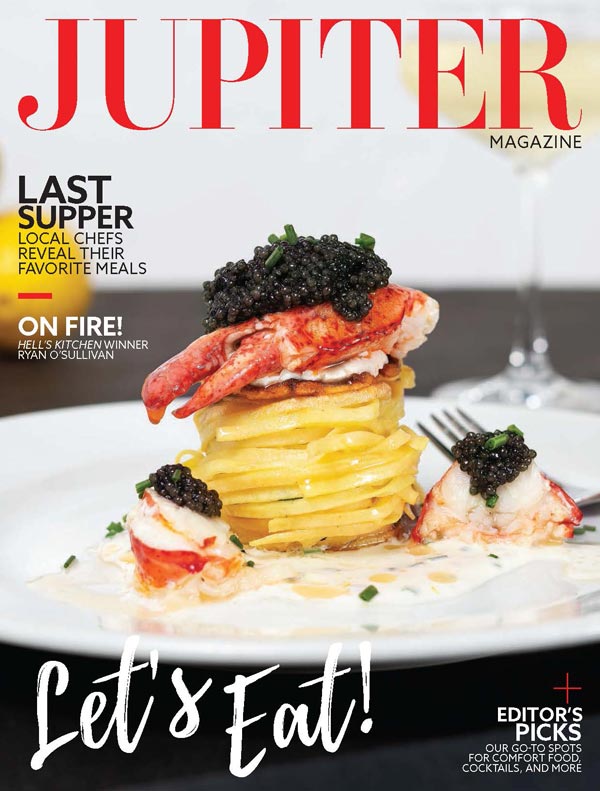
Akina Johnson, Jupiter

Textile artist Akina Johnson likes to create pieces inspired by her natural surroundings. “I love the weather, the ocean, and the year-round green and sunshine, and I love to combine the art of hand-dyeing with a coastal vibe,” says the 47-year-old Jupiter resident, who resides near the beach.
Using the Japanese shibori dyeing technique, Johnson experiments with fabrics, colors, and designs to make customized clothing and home goods for her company, Studio Akina. Vibrant hues, ocean blues, and traces of sand dollars are popular in her work, which includes linen pillows and napkins as well as silk loungewear, hair accessories, and dresses. Her process includes folding, binding, and stitching white fabric before dyeing and constructing it.
“I am continually testing new colors and dyeing techniques, which requires a lot of trial and error,” she says. “I love the uncertainty yet the control of it all. I get to decide what type of fabric and look I want—but with a bit of surprise, given that I can’t completely control how the dye will travel through the fabric.”

And while she’s always mindful of how each dye will represent the natural elements of her coastal town, Johnson is equally pleased when clients ask for custom pieces with bolder colors that pop. “I have not met many colors I do not like, as you can see from the line,” she says. studioakina.com

Chad Periman, Port St. Lucie

Photo by Everett Periman
When it comes to creating his vibrant sculptures, Chad Periman has a definite favorite medium: salvaged metal scraps.“I appreciate the timelessness of the material,” says the 47-year-old Port St. Lucie resident. “The shaping and joining of metal has been vital to the development of our civilization, and metal objects are among the oldest things ever found. It’s also a forgiving material that can be added to and reformed in ways that other materials cannot.”
A professional artist for most of his life, Periman currently focuses on creating and photographing three-dimensional work using salvaged materials. Favorite pieces include his Sentinel series, compressed-metal compositions each standing 4 feet tall and weighing between 300 and 600 pounds. His first three are currently on display at the University of Indiana, and he is currently working on a fourth.

Periman is also looking forward to creating pieces for a local exhibition at the Environmental Learning Center in Vero Beach, which is scheduled to open in March. He’s excited for people to see how beautiful recycled metal can be. “I love working with damaged and discarded materials to create something new that transcends the sum of its parts and provokes a re-examination of our relationship with the world,” he says. “My work is a reflection of the potential for beauty that exists in all things, as it exists in all people.” perimanart.com
Christine Raininger, Jupiter

Photo by Allen Eyestone
Christine Raininger, 30, is always thinking about how her actions affect our ecosystem and its inhabitants. When the Ontario-born wildlife biologist moved to Florida in 2014, scuba diving quickly became a favorite pastime—along with spearfishing one of the state’s most invasive species.
“I got into lionfish hunting because I knew they were having a negative impact on our reef fish population,” says the Jupiter resident, who works for the Florida Fish and Wildlife Conservation Commission. “I wanted to help combat the invasion.” In essence, she has turned her hobby into a three-pronged win: She removes an invasive species from our waters, eats the meat, and uses its gorgeous features to create art. “They’re beautiful fish, so I started looking at their fins to see if I could dry them out and turn them into jewelry,” she says.

The self-taught jewelry maker sells as many as a dozen pairs of lionfish earrings in a single weekend via her Etsy shop and Instagram direct-message requests. Raininger removes the venomous needles from the fish’s grooved spines, which primarily come from the dorsal fin, and dries them for several days. She then adds a clear epoxy finish and earring hardware to create one-of-a-kind pieces that she hopes will remind the wearer of the many ways we can help combat invasive species in our area.
“Invasive species are such a huge deal in Florida because of our subtropical climate,” she says. There are so many species that thrive here and are competing with our native species. If we can eat them and create with them, I think that is so cool.” etsy.com/shop/lionfishhuntress











Facebook Comments